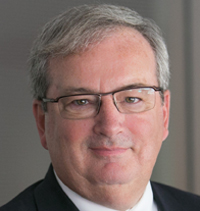If Congress paid even one-tenth the amount of time trying to “fix” its own problems as it does in its petty meddling in the operations of TSA, the general public would have greater confidence in both organizations. Both entities could benefit from meaningful oversight and process (and personnel) improvement, and I’m the last person to criticize constructive criticism.
But the joint hearing this week by the House Oversight and House Transportation committees was a one-sided effort, seemingly designed to point out problems without offering any serious solutions to those concerns – and it confirmed (yet again) for me why the Congressional labyrinth of DHS oversight needs to be addressed.
At least the two committees held a joint hearing instead of two separate ones. The real question is why they felt it important to hold it at all!
The 9-11 Commission was right that overlapping congressional oversight turf wars would result in no real gain in DHS effectiveness. This week’s hearing proved their point and this issue needs to be addressed by Congressional leadership – and soon. But complaining about the mishmash of congressional oversight is only part of the story that needs to be told.
Despite evidence that when dealing with human beings fear and punishment are nowhere near as effective as praise and promotion of best practices, I can’t think of a single Congressional hearing entitled, “What TSA Is Doing Right And Why We Ought To Be Doing More Of It.” Why is that?
If Congress WERE to hold such a hearing, there is at least one shining moment (apologizes to the crew putting together the Final Four video compilation for this next week) that ought to get widespread coverage and significant praise. That example is one I experienced when passing through the Des Moines Airport earlier this year.
As passengers approached the TSA checkpoint, they are met with a series of signs, both overhead and beside the stanchions listing the “Eight Common Problems Passengers Encounter” when going through TSA screening. It is brilliantly positioned, clearly messaged and non-confrontationally conveyed. The signs allow passengers sufficient time and information to assume personal responsibility for their own actions. Each sign highlights a single problem – failure to remove liquids, not putting computers in a separate bin, etc.
The net result of giving passengers greater information than they would otherwise get is that the lines move quickly, the “hassle factor” is minimized and the passengers are empowered by the self-help approach. What’s not to like about this?
When I asked TSA Public Affairs if this was a locally-instigated program or an agency-wide practice, I learned this was an idea Jay Brainard, the Des Moines Federal Security Director, and his team in Iowa implemented last year to deal with the influx of “outsiders” who were expected in Iowa for the presidential election campaigns. Apparently, a couple other FSDs have adopted this public awareness campaign at a few other airports, but I thought it was so brilliant and elegantly simple that it should be a TSA “best practice” and highlighted in internal TSA publications and in public communications. Alas, I cannot find that TSA has given the idea any publicity whatsoever (emphasis on “I cannot find…”), but I think they ought to and I hope this blog will spur them into action.
TSA deserves to get praise for what they do well. TSA deserves to reward “best practices” developed by their personnel, and they should do so with public recognition and management reinforcement. TSA needs to proclaim to a skeptical Congress that aviation security requires a shared responsibility and that Congress shares in much of the blame that is thrown at TSA.
Of course, talking about “good ideas and well-run programs” rarely gets mentioned in a Congressional oversight hearing. But it should.


